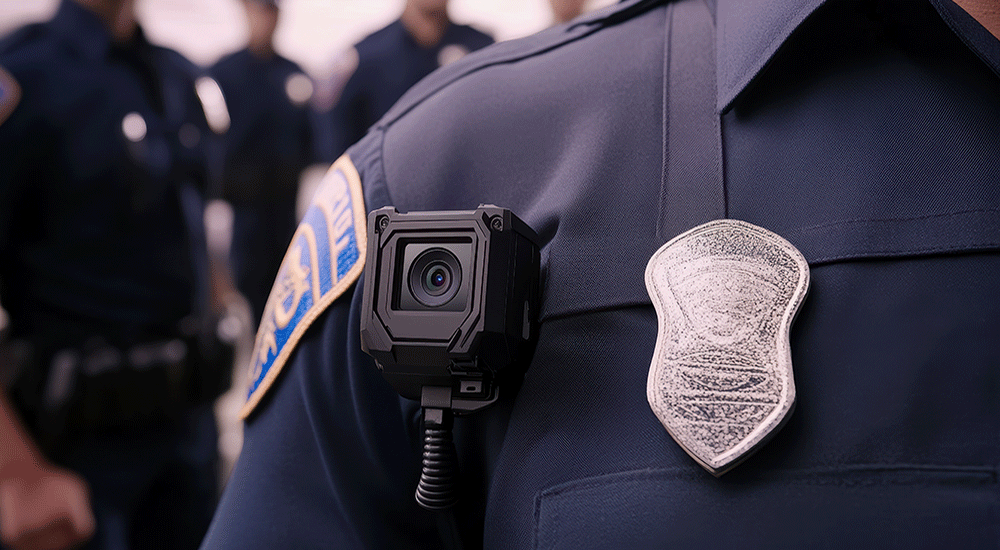College and K-12 campus safety leaders are increasingly turning to technology to improve real-time decision-making. Among the most transformative innovations gaining traction nationwide is the evolution of body-worn camera systems – tools that now do far more than just record footage.
What began as a transparency and post-incident review tool has quickly evolved into a mobile situational awareness platform. The latest generation of body-worn camera systems combines livestreaming, GPS tracking, and mobile device integration, turning every campus officer into a connected officer. These capabilities are reshaping how safety departments respond to active threats, investigate incidents, and coordinate across multiple units or agencies.
Body-Worn Cameras: From Documentation to Live Response
Traditionally, body-worn cameras have served as passive recorders — valuable in investigations and for accountability, but of limited use in the moment. Newer systems now enable live video feeds from the officer’s perspective, giving dispatchers and command staff a window into real-time conditions during situations like a campus fight, escalating behavioral health incident, or a security breach near a dormitory.
RELATED: Body-Worn Cameras Are Revolutionizing Hospital Safety and Security
This shift is especially meaningful on large campuses or within sprawling school districts, where distance and time often hamper response coordination.
With GPS and live-streaming data accessible from a unified interface, dispatchers and administrators can more effectively support officers in the field, ensuring faster, more informed decisions.
Empowering Coordination and Training
Situational awareness doesn’t stop at the officer level. These systems now offer features allowing incident feeds to be shared with school administrators, emergency management officials, and partner agencies. That level of visibility can be game-changing during high-stakes events, such as active threats, lockdowns, or large gatherings, where coordination between roles and departments is critical.
Some forward-thinking agencies also use these tools to enhance training and after-action reviews. Whether evaluating response tactics or identifying communication breakdowns, recorded live video helps safety teams improve over time, reinforcing what went well and where adjustments are needed.
Privacy, Policy, and Practical Considerations for Body-Worn Cameras
With greater capability comes greater responsibility. Educational institutions must carefully consider how they implement live-stream-enabled body-worn cameras, especially in environments where privacy concerns are heightened, such as clinics or counseling centers.
RELATED: St. Louis: CVPA School Shooting Security Footage Released
Effective deployment depends on a clear activation and access policy and thoughtful planning regarding data retention and access controls. Some agencies are rethinking whether manual or automated camera activation better aligns with their operational goals and community expectations. Providing proper training for all users, from frontline staff to decision-makers relying on real-time video insight, is also key.
Looking Ahead: Body-Worn Cameras as a Force Multiplier
Campus safety leaders today face increasingly complex challenges — from behavioral health calls to the growing threat of swatting hoaxes. Tools that extend visibility, improve communication, and allow teams to act without delay are valuable infrastructure.
Body-worn camera programs integrated with mobile platforms are beginning to serve as force multipliers by capturing video and enabling smart, responsive safety ecosystems. These technologies are helping departments become more agile, transparent, and better equipped to meet the moment without requiring additional staffing.
These systems don’t replace human judgment — they amplify it. For educational institutions planning ahead, the question is no longer if this technology fits, but how to deploy it to reflect campus values, priorities, and policy frameworks.
Amber Allen is product manager at Versaterm, a public safety solutions provider. Allen is also a public safety technology contributor who writes about emerging trends in law enforcement, emergency response, and campus security.
NOTE: The views expressed by guest bloggers and contributors are those of the authors and do not necessarily represent the views of, and should not be attributed to, Campus Safety.







